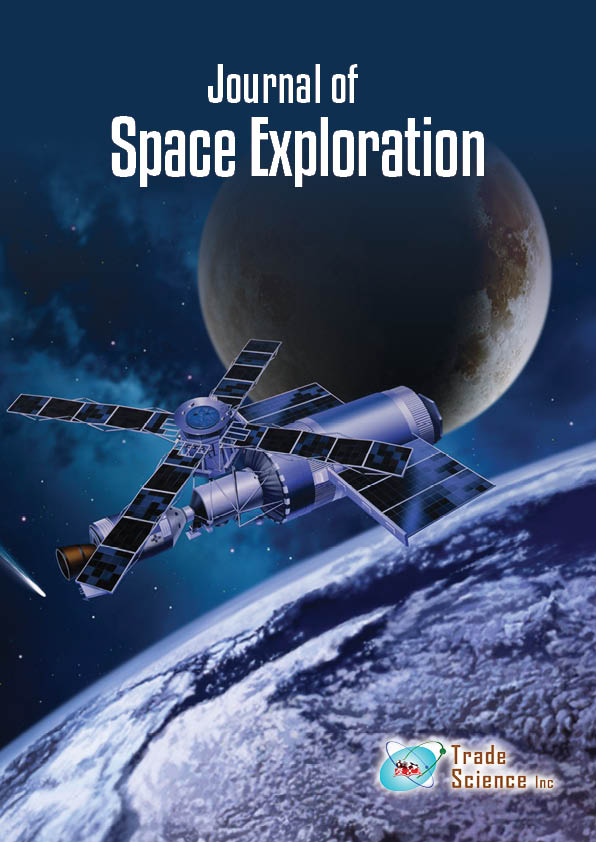Perspective
, Volume: 13( 6)Exploring Black Holes and Neutron Stars: Culmination of Stellar Evolution and Their Cosmic Influence
- *Correspondence:
- Jack Wilson
Department of Physics and Astronomy, University of Rostock, Germany
E-mail: jackwilson@physics.uu.se
Received date: Aug-04-2024, Manuscript No. tsse-24-130147; Editor assigned: Aug-06-2024, Pre-QC No. tsse-24-130147 (PQ); Reviewed: Aug-8-2024, QC No tsse-24-130147; Revised: Aug-13-2024, Manuscript No. tsse-24-130147 (R); Published: Aug-30-2024, DOI.10.37532/2320-6756.2024.13(6).365
Citation:Wilson J. Exploring Black Holes and Neutron Stars: Culmination of Stellar Evolution and Their Cosmic Influence. J Space Explor.2024;13(6)365.
Abstract
Black holes and neutron stars, the enigmatic remnants of massive stars' evolution, stand as some of the most intriguing objects in the cosmos. These cosmic entities, born from the fiery deaths of massive stars, wield immense gravitational forces that shape the fabric of space-time around them. In this article, we embark on a journey through the fascinating realms of black holes and neutron stars, unraveling their formation, characteristics, and profound influence on the surrounding space. From gravitational waves to galactic dynamics, understanding these celestial marvels is paramount to unlocking the secrets of our universe.Introduction
Black holes and neutron stars represent the extreme endpoints of stellar evolution, where the relentless forces of gravity compress matter to extraordinary densities. These cosmic entities, born from the dramatic deaths of massive stars, captivate astronomers and astrophysicists with their enigmatic nature and profound influence on the surrounding space. In this article, we delve into the realms of black holes and neutron stars, exploring their formation, properties, and the remarkable effects they exert on the cosmos.
Formation of black holes and neutron stars
Black holes and neutron stars are born from the explosive deaths of massive stars in supernova explosions. When a massive star exhausts its nuclear fuel, its core collapses under its own gravity, leading to the formation of either a neutron star or a black hole, depending on the mass of the progenitor star. Neutron stars form when the collapse is halted by neutron degeneracy pressure, while black holes arise when the collapse continues unchecked, leading to the formation of a singularity surrounded by an event horizon.
Characteristics of black holes and neutron stars
Black holes are characterized by their extreme gravitational fields, which are so intense that not even light can escape from within the event horizon. Neutron stars, on the other hand, are incredibly dense objects composed primarily of neutrons, with densities exceeding that of atomic nuclei. Both black holes and neutron stars exhibit unique observational signatures, allowing astronomers to detect them through a variety of techniques, including X-ray and radio observations, as well as gravitational wave detection.
Influence on the surrounding space
The gravitational influence of black holes and neutron stars extends far beyond their immediate vicinity, shaping the dynamics of the surrounding space and influencing the evolution of galaxies and cosmic structures. Black holes, in particular, are thought to play a crucial role in the formation and evolution of galaxies, as their gravitational pull can disrupt nearby stars and gas clouds, triggering star formation and affecting the distribution of matter in the galactic environment. Neutron stars also contribute to galactic dynamics, albeit to a lesser extent, through their interactions with binary companion stars and their remnants.
Gravitational waves and stellar collisions
One of the most exciting aspects of black holes and neutron stars is their ability to generate gravitational waves, ripples in the fabric of space-time predicted by Einstein's theory of general relativity. Gravitational wave observatories, such as LIGO and Virgo, have detected numerous mergers of black holes and neutron stars, providing unprecedented insights into the dynamics of these cosmic collisions and the nature of gravity itself. These observations have confirmed long-standing theoretical predictions and opened up new avenues for studying the extreme physics of black holes and neutron stars.
Future prospects and discoveries
As technology continues to advance, astronomers are poised to make further groundbreaking discoveries in the field of black holes and neutron stars. Future missions, such as the Laser Interferometer Space Antenna (LISA) and the Square Kilometre Array (SKA), promise to revolutionize our understanding of these cosmic entities and their role in shaping the universe. From probing the interiors of neutron stars to mapping the gravitational waves emitted by black hole mergers, the future of black hole and neutron star research is full of exciting possibilities.
Conclusion
Black holes and neutron stars stand as the cosmic endpoints of stellar evolution, exerting immense gravitational forces that shape the fabric of space-time around them. From their formation in the fiery deaths of massive stars to their influence on galactic dynamics and the emission of gravitational waves, these enigmatic objects continue to intrigue and inspire scientists around the world. By unraveling the mysteries of black holes and neutron stars, astronomers gain valuable insights into the extreme physics of the universe and our place within it. In conclusion, the study of black holes and neutron stars offers profound insights into the culmination of stellar evolution and their consequential influence on the cosmos. These enigmatic objects not only embody the final stages of massive stars but also serve as critical laboratories for testing the laws of physics under extreme conditions. The gravitational pull of black holes and neutron stars shapes their surrounding environments, influencing the formation of galaxies and the distribution of matter in the universe. Advancements in observational technology and theoretical models continue to unravel the mysteries of these celestial phenomena, enhancing our understanding of the universe's most powerful forces. As we delve deeper into the complexities of black holes and neutron stars, we uncover the intricate tapestry of cosmic evolution and the fundamental principles that govern our universe.

